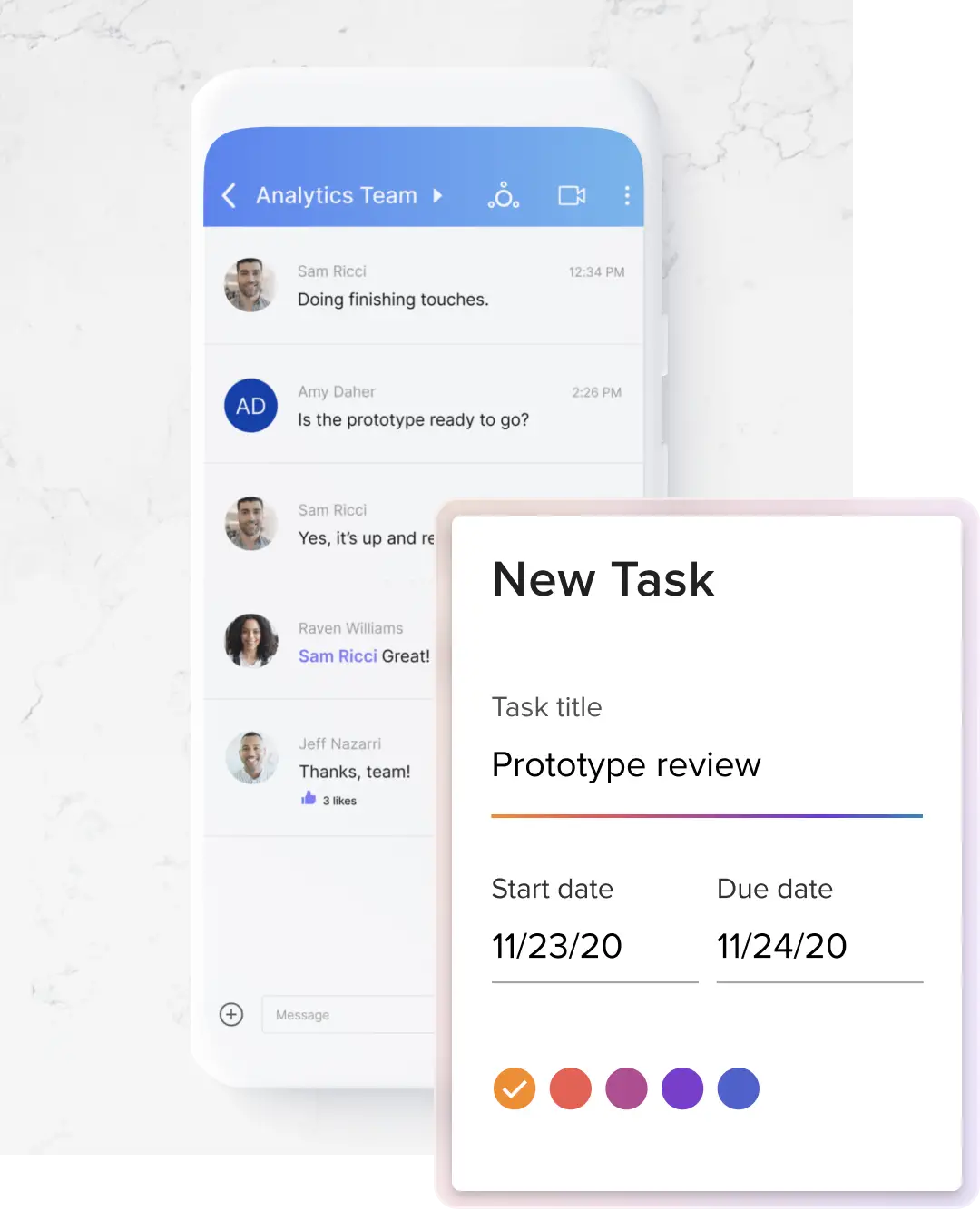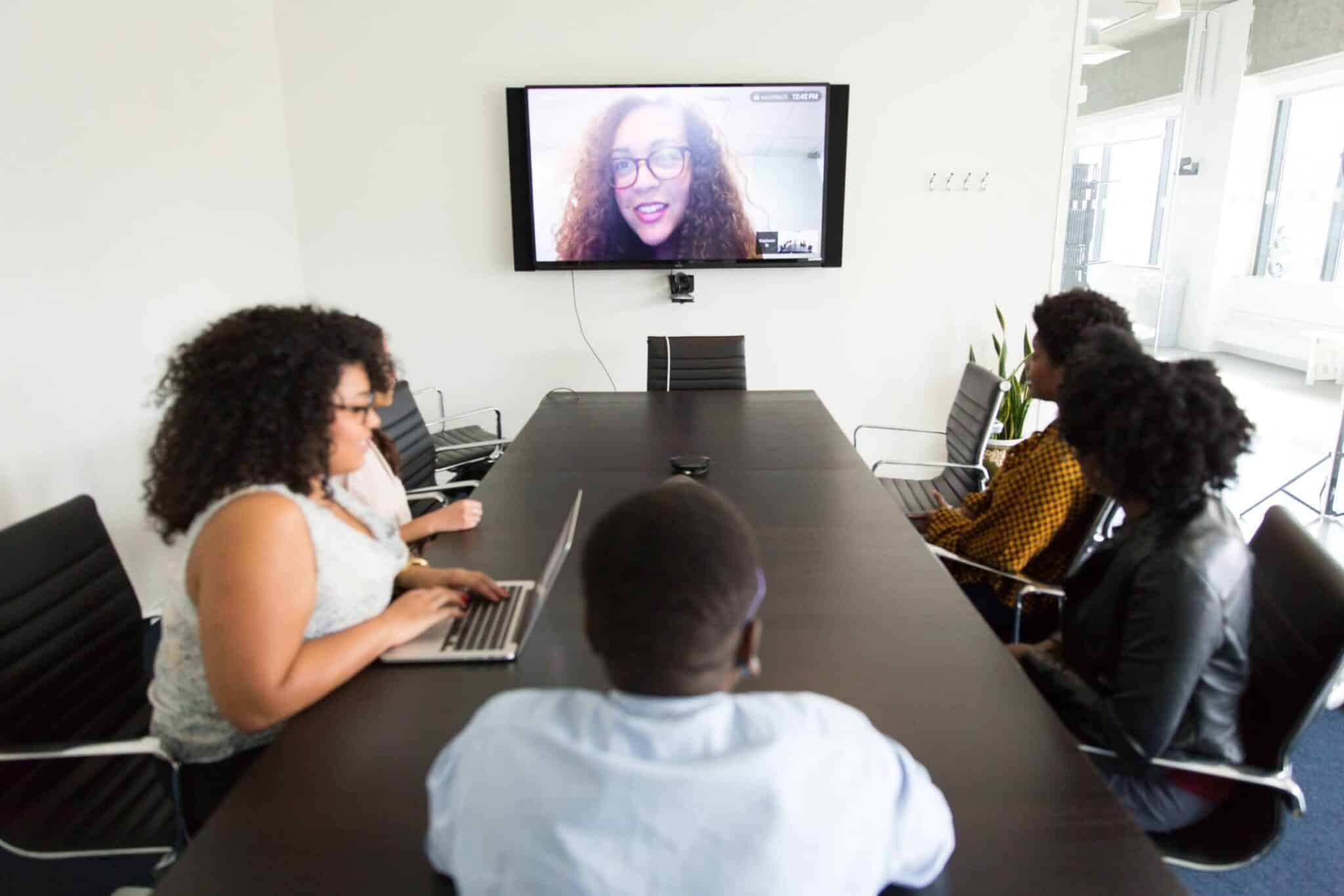Zofia Bobrowicz Cohn, EMEA Product Marketing Manager at RingCentral, explores the topic of running effective hybrid meetings.
 A whopping 97% of event marketers think there will be more hybrid events in 2021 than ever before.
A whopping 97% of event marketers think there will be more hybrid events in 2021 than ever before.
Certainly, the way we work has changed, with remote interaction here to stay. But that’s not to say bricks-and-mortar offices will cease to exist.
The more likely scenario is a parallel one, where a combination of office and remote work becomes the norm. So how will these dual environments work?
If you’re wondering about that very question, this article will help you with one facet in particular: how to effectively run hybrid meetings.
Read on for the lowdown.
What’s a hybrid meeting?
First, a definition. A hybrid meeting is one where some people participate in person and others join remotely.
Hybrid working is becoming increasingly popular. And hybrid meetings go hand in hand with that.
The dual aspect of hybrid meetings means the experience changes and challenges are faced. These range from remote workers feeling isolated to technical and participation issues.
Environmental factors come into play too. For example, different time zones and noisy workspaces. Something like a doorbell ringing or sounds from an open window can be distracting.
Hybrid meetings extend to events as well, where a host presents to a group ranging from in-person to virtual. The difficulties and principles are the same, however.
So let’s move onto our top tips for running effective hybrid meetings.
Embrace hybrid meetings
Adopting an employee-centric mindset is beneficial to your business. To develop one, embracing flexible working is key. The result? Some of your staff are likely to choose to work from home, whereas others may feel greater employee engagement in the office.
That means hybrid meetings are a necessity. But don’t see them simply as an annoyance. The virtual aspect must not be viewed as a burden.
Instead, respect people’s time and use hybrid meetings to build connections.
Plan, plan, plan
To make your virtual meetings a success, spend some extra time planning. Be clear about what you want to achieve and what your meeting objectives are.
Remote workers aren’t able to walk over to your desk for a chat about what the meeting’s going to entail, so be clear in your correspondence.
For example, let’s say you’re scheduling a meeting about SaaS marketing strategies. Send out a clear and detailed agenda as well as any relevant lead generation materials. Make sure you include a teleconferencing link and choose a space with a strong internet connection.
Strive for equal participation
Hybrid meetings mean two distinct sets of attendees: the in-person group and the remote collective. It’s important to encourage both virtual team building and an amicable office atmosphere.
Remote employees may complain they’re talked over or interrupted during hybrid meetings. To remedy this, structure the meeting so all participants feel part of the discussion. How? Go around each person and give them a chance to talk.
You might also want to implement a rule where both virtual and in-person attendees raise their hands before speaking.

Stay on top of time and attendance
Keep hybrid meetings as brief as possible. It can be draining for virtual staff staring at a screen. And it can be difficult to focus during long meetings whether you’re a virtual member or work in the office.
To facilitate brevity, stick to the agenda, and keep an eye on the clock.
Only invite people who are absolutely required to attend and can add value to the conversation. If people are working across different continents, their time is valuable. Don’t inundate them with meeting requests unless they’re strictly necessary.
For example, if half of your sales team are remote working in the UK and the other half work in a US-based office, the time difference matters. If a UK employee has vital input, try and schedule a hybrid meeting at a point in the day that suits both time zones.
Make the most of digital tools
 Technology is your friend and is a crucial part of a hybrid workforce. But don’t think of it as something for the virtual contingent alone. Normalize the use of technology across all attendees – it can help everyone.
Technology is your friend and is a crucial part of a hybrid workforce. But don’t think of it as something for the virtual contingent alone. Normalize the use of technology across all attendees – it can help everyone.
You’ve probably experienced writing something on a post-it and then trying to find it a few days later but failing. Annoying, right?
To rectify that, utilize collaborative software for brainstorming instead of sticky notes and whiteboards. That way, ideas can be saved digitally so everyone can access them.
And instead of someone taking notes or minutes manually, record them in a collaborative document. By doing that, they’re in a unified place and changes can be tracked and saved.
Use visual communications to get points across. These appeal to both virtual and in-person attendees.
Install internal communications software so all participants – remote and in-person – can debrief post-meeting.
And think about unifying your suite of technology.
Camera and muting
There should be meeting etiquette, so outline some basic guidelines. That will improve the experience for all attendees.
Let’s say you’re a home fitness brand having a hybrid meeting to discuss the merits of implementing retail inventory management software. The last thing you want during that detailed and complex conversation is for one of your virtual attendees to turn their camera off. It’s a sure sign they’re away from their desk and doing something else.
If in-person employees have laptops, ask them to join the virtual meeting with cameras on and muted. That way, the remote members can see everyone. Equally, virtual participants should always keep their cameras on.

Increase asynchronous work
Although we’re outlining ways to run effective hybrid meetings, you should also consider reducing the overall number you hold.
Think about focusing more on asynchronous communication.
For example, run your daily catch-ups via a group message thread. Have discussions through project management tools and make the most of collaborative intranets.
Meeting after meeting removes one of the big advantages of remote working: flexibility. On the flip side, people working in the office don’t want to spend their whole day rushing from one meeting room to another. Where’s the time for ‘normal’ work? For instance, catching up on and replying to important emails.
Don’t have zero meetings; eliminate the unnecessary ones.
Hybrid events
The ethos for running an effective hybrid event is much the same as a hybrid meeting. An added consideration? If you’re presenting to a hybrid audience, rehearsal is key.
Pick the right team and use reliable, high-quality equipment. Take care with camera positioning to ensure your virtual members feel connected. Think about using a dedicated moderator to act on behalf of your online audience.
And at Q&A time, encourage questions from both the virtual and live attendees.
Get the most out of hybrid meetings
It’s estimated that 36.2 million Americans will be working remotely in 2025. That’s 22% of the workforce, so you may have to manage both virtual and in-office teams as part of your daily work-life.
With that comes challenges and considerations in terms of meetings.
To run hybrid meetings effectively, there are several factors to think about. These range from embracing the new norm and planning thoroughly to ensuring attendees can participate equally.
Implement meeting guidelines, make the most of technology, and concentrate on asynchronous work. Take these points into account for the ultimate in productive hybrid meetings.
Zofia Bobrowicz Cohn – RingCentral UK
Zofia Bobrowicz Cohn is an EMEA Product Marketing Manager at RingCentral, the leader in cloud communication and cloud contact center technologies. As a strong believer in digital transformation, she thrives by helping organizations find the right technology that supports their business processes. Here is her LinkedIn.
Please visit RingCentral to view our post on how companies can embrace the dynamic workplace.
Photos: Scott Graham, Anna Shvets, RingCentral, Christina @ wocintechchat.com,




